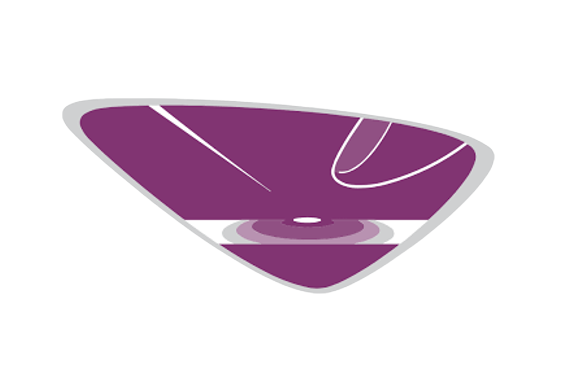Payout Ratio: What It Is, How To Use It, and How To Calculate It
Many financial advisors counsel that the most ideal payout ratio is between 40 and 60%. This allows the investor to collect a good periodic income from dividends, if their holdings are substantial. It also means that the company has in mind the importance of continued growth, in the near term as well as the more distant future.
- They often share more profits with their shareholders, leading to higher dividend payouts.
- They’re also less likely to increase the amount of dividends paid since they have lower retained earnings.
- Besides his extensive derivative trading expertise, Adam is an expert in economics and behavioral finance.
- They divide the dividend for each share by the earnings for each share.
Furthermore, we want to invest in companies with a compound annual growth rate of dividends higher than 5%. To perform such a calculation, check the CAGR calculator and input the dividend the company paid 5 years ago and their last yearly dividend. The dividend payout ratio calculator is a fast tool that indicates how likely it is for a company to keep paying the current dividend level. In this article, we will cover what the dividend payout ratio is, how to calculate it, what is a good dividend payout ratio, and, as usual, we will cover an example of a real company. At first glance, a higher dividend yield may seem like a good thing as it indicates that a company is paying out more of its profits in dividends. But it’s important to consider whether a high dividend yield is sustainable, relative to how much of its earnings a company is paying out.
What is the approximate value of your cash savings and other investments?
Yarilet Perez is an experienced multimedia journalist and fact-checker with a Master of Science in Journalism. She has worked in multiple cities covering breaking news, politics, education, and more. Her expertise is in personal finance and investing, and real estate. @hamje32 – I think that’s the average payout ratio for most companies nowadays.
One thing that should be pointed out is that payout ratios for those same companies can increase over time. They may start out low because they are using most of their profits to reinvest in the business, but as the company grows, it can afford to increase its payout ratio. The dividend payout ratio tells you what percentage of a company’s earnings pay out as a dividend.
© 2023 Market data provided is at least 10-minutes delayed and hosted by Barchart Solutions. Information is provided ‘as-is’ and solely for informational purposes, not for trading purposes or advice, and is delayed. To see all exchange delays and terms of use please see Barchart’s disclaimer.
What are the Drawbacks to High Dividend Payout Ratios?
Conversely, a low payout ratio can signal that a company is reinvesting the bulk of its earnings into expanding operations. Historically, companies with the best long-term records of dividend payments have had stable payout ratios over many years. You may be wondering what DPR means and why you should know how to calculate it when investing in dividend stocks. Along with other dividend metrics, such as dividend yield, DPR can help you decide which dividend stocks you want to invest in. For example, a company that has a higher dividend payout ratio is paying out more of its net income to investors and putting less money into the business or paying off debt.
Example of the Dividend Payout Ratio
New companies typically don’t pay dividends since they’re still growing and need the capital to finance growth. However, established companies usually pay a portion of their retained earnings out as dividends while also reinvesting a portion back into the company. The retention ratio is the proportion of earnings kept back in the business as retained https://accounting-services.net/dividend-per-share/ earnings. The retention ratio refers to the percentage of net income that is retained to grow the business, rather than being paid out as dividends. It is the opposite of the payout ratio, which measures the percentage of profit paid out to shareholders as dividends. The payout ratio is also useful for assessing a dividend’s sustainability.
Earnings per share (EPS) growth
As the above examples depict, the dividend payout ratio will be different for different firms in different industries with different financial situations. Investors need to realize that not all companies’ dividend payout ratios should be examined the same. Typically, older and more mature companies will tend to have a higher payout ratio as they have the financial capabilities to payout more to shareholders.
Funds that aren’t used for dividend payouts can be used to pay off debt or invest in growth and expansion projects. However, prior to investing in stocks that offer high dividend yields, investors should analyze whether the dividends are sustainable for a long period. Once you find the dividend payout ratio, you can use it to determine whether the company is paying out too much or too little in dividends. A high dividend payout ratio could indicate that a company is financially stable and profitable, with excess cash flow that it can afford to pay out as dividends. On the other hand, a low dividend payout ratio may mean that a company is reinvesting its earnings into the business for growth and expansion.
How Can I Calculate a Dividend Payout Ratio?
The DPR alone cannot define a company’s health, but it gives a sense of how the company prioritizes investment in future growth. It may also give insight into where the company is in its life cycle. Additionally, dividend reductions are viewed negatively in the market and can lead to stock prices dropping (2). For instance, insurance company MetLife (MET) has a payout ratio of 72.3%, while tech company Apple (AAPL) has a payout ratio of 14.6%.

